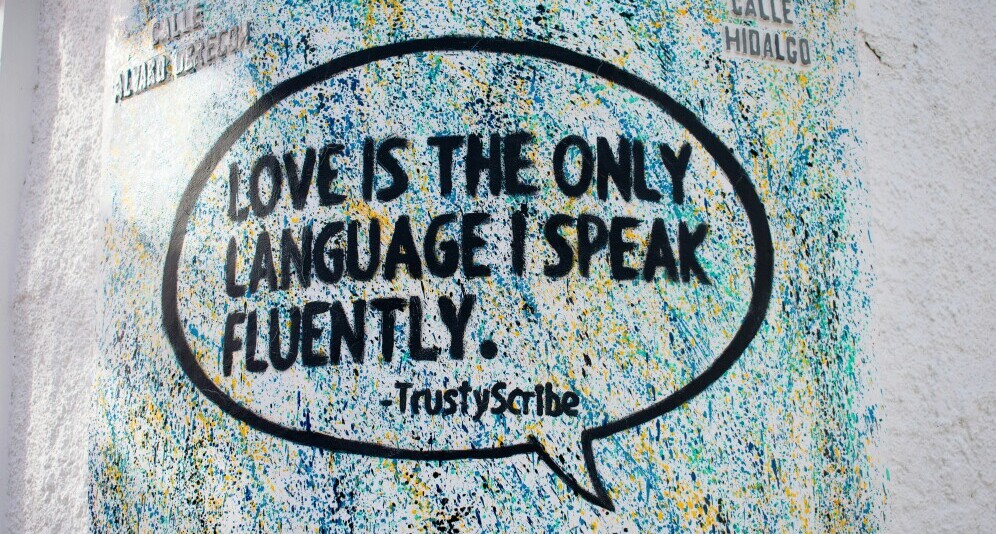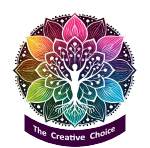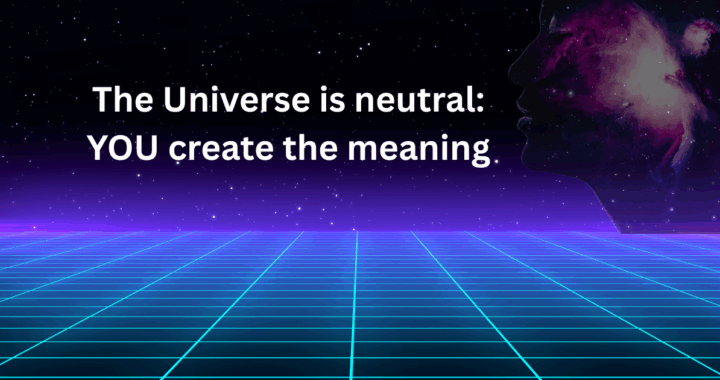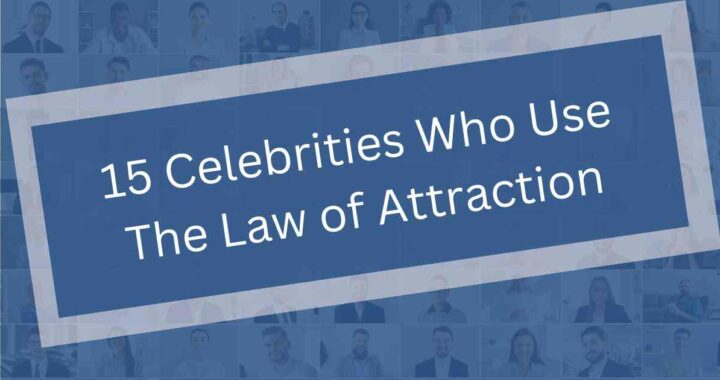Love is one of the most profound forces in our lives and I would say that it is the underlying make-up of the universe itself. Love is transformative, and healing, and can range from being deeply personal to a love that encompasses all things. While we all experience love in some form or another, how we give and receive it can vary greatly between couples, individuals and even parents and children. Gary Chapman’s The 5 Love Languages: The Secret to Love That Lasts, published in 1992, provided a framework to help people understand how love is expressed. It aimed to help them understand how differences in the way people express and recognise love may affect their relationships.
This was a seminal work which helped many people, but in the intervening years, the definitions of how we give and experience love have evolved. We could now define love as far more expansive than Chapman’s original five categories. As our understanding evolves, we will explore Chapman’s love languages, and then move beyond them to consider the deeper, often more spiritual, ways love manifests in our lives.

This article contains some affiliate links, which means that if you decide to buy, I may receive a small commission at no extra cost to you. As an Amazon Associate, I earn from qualifying purchases. This helps me keep The Creative Choice growing and free for readers. Thank you for your support. For more information, see our Affiliate Disclosure.
“The 5 Love Languages” by Gary Chapman
Gary Chapman was born in North Carolina, USA. His first book, The 5 Love Languages: The Secret to Love That Lasts, introduced the idea that people primarily experience love through five different ‘languages.’ He argued that some people prefer one ‘language’ and others show and receive love in different ways. Understanding your own love language can help improve relationships and strengthen emotional connections.
Critics say that Chapman’s work was based mostly on his work as a pastor advising couples, rather than being grounded in any known scientific or empirical evidence, however, his books are popular and seem to resonate with most people on some level.
According to Chapman, the 5 love languages are:
- Words of Affirmation – Some people feel most loved when they receive kind, encouraging, and affirming words. A heartfelt compliment or an expression of appreciation can mean everything. An example would be a person who gives a lot of compliments and praise and tells you they love you often.
- Acts of Service – Love can be shown through actions. Whether it is making a cup of tea for a loved one or supporting them in a difficult time, these gestures communicate care. Other examples would be checking in often, giving loved ones lifts, and helping them as often as possible.
- Receiving Gifts – A meaningful, thoughtful gift can symbolise love and appreciation. It’s not about materialism, but rather about the intention behind the gift. A person who favours this approach will give small tokens, such as flowers, a handmade card, or just something small they picked up at the supermarket whilst thinking of their loved one.
- Quality Time – Spending meaningful, undistracted time with someone is a powerful expression of love. Being fully present is often more valuable than anything else. These people will prioritise spending time together, making plans and emphasising time together.
- Physical Touch – From a warm hug to a reassuring hand on the shoulder, touch can create a deep sense of connection and safety. These people are very tactile, love hugs, hold hands and show affection often.
Whether Chapman’s work was rooted in science or not, for me, the value of his work is helping people to understand their own relationships and how their approach to love might differ from their partners. For example, if one partner favours words of affirmation, but the other favours giving and receiving gifts, then there may be a mismatch in approaches. One partner may feel ‘unloved’ because they feel their partner doesn’t tell them they love them enough, even though they are always giving them presents. This is a bit like Demi Moore’s character in the film “Ghost” who was frustrated because her partner, played by Patrick Swayze, would only ever say “Ditto” when she said she loved him.
In my opinion, communication is key here and the more people understand each other, the better their relationship will be, so this book helped many (and is still helping many) to open conversations about how they both understand love.
While these five love languages provide a useful guide, they do not encompass the full depth of love’s expression. Love is vast, and people experience it in ways that go beyond words, gifts, or physical touch. Chapman went on to write many more books which offered insights into different types of love.
Books by Gary Chapman in order of publication
- The 5 Love Languages: The Secret to Love That Lasts (1992)
- Loving Solutions (1994)
- Toward a Growing Marriage (1996)
- Covenant Marriage: Building Communication and Intimacy (2003)
- The 5 Love Languages of Children (with Ross Campbell) (2005)
- The 5 Love Languages Men’s Edition (2009)
- The 5 Love Languages of Teenagers (2010)
- The 5 Love Languages Singles Edition (2010)
- Things I Wish I’d Known Before We Got Married (2010)
- God Speaks Your Love Language (2010)
- The Marriage You’ve Always Wanted (2012)
- The 5 Love Languages of the Workplace (2014)
- The 5 Love Languages Military Edition (2017)
- The 5 Love Languages for Parents Raising Children with Disabilities (2023)
These are some of Chapman’s most well-known books, though he has also written many more on relationships, marriage, and communication.
To visit Gary Chapman’s author page on Amazon or to buy any of Gary Chapman’s books, click here.
Beyond the 5 love languages: Expanding how we express love

Love exists in many different forms and Chapman’s other books have highlighted some of the other ways other than romantic love, that love pervades our universe. If we remember to look at love in those terms as well, we might come to broader conclusions about how we can learn to love more whilst here on Earth.
Love as an energetic and spiritual connection
I believe that love is the basis of ‘All That Is’, what some people call ‘God’, or Source Energy. In spiritual terms, that means that love is not just about actions or words, presents or a friendly hug; it is an energetic force that is everything, pervades everything, and is the very thing that we are ‘made of’.
If we are thinking in terms of Newtonian physics, we would say that everything in the universe is made of a type of ‘matter’ and the smallest pieces of this matter, must be the building blocks of the universe, such as atoms or protons and electrons, in the same way that we might think of the smallest Lego blocks as the building blocks in a Lego tower.
Quantum ideas
In fact, science has now determined, through quantum physics, that there are no real ‘building blocks’ of the universe as Newtonian physics advocates. Instead, as our physics has focused on the quantum field, we have discovered that there are only pieces of energy which can appear and disappear randomly, be in two places at once, are connected by some kind of interconnected web, and can transform from particles to waves and vice versa, seemingly at will. It’s more like a Lego brick that can become a hologram, a tower, and an unrelated object like an apple, whenever it wants through complex interactions which frankly, we don’t really understand!
On the other hand, spiritual leaders and enlightened masters throughout history have understood this to be the very nature of existence. An all-encompassing energy of love from which everything else is created through consciousness. This type of love responds to all love ‘love languages’ because unconditional love is its very nature. It doesn’t matter who you are, what you’ve done, or what planet, dimension or corner of the universe you are in, the fundamental truth is that – All That Is loves All That Is, unconditionally – and that means YOU!
The problem of human comprehension
As spiritual beings having a human experience, much of this knowledge and understanding is forgotten as we are born into our human form. We emerge in the world and immediately forget that we are spiritual beings, made of love and fractals of Source Energy. Instead, we are told, and sadly most of us believe, that we are just human beings living in a competitive world, and we need to ‘be the best’ in order to get ahead and succeed. We forget that we are made of love and have come here to remember that and to learn more about love in all its forms.
Love as understanding and acceptance
Feeling loved is often about feeling understood. One of the greatest gifts we can give to someone else is the ability to see them for who they truly are, without trying to change or fix them. Unconditional acceptance is a rare but powerful form of love. Unconditional love is not about giving gifts or doing or saying the right thing. Sometimes, it is just about being there for someone – offering them your full attention, deep listening and non-judgmental support. This is one of the purest ways to express love, allowing the other person to feel truly seen and heard. It’s a bit like the “I see you” understanding in the film, “Avatar”. It encompasses one person fully understanding another.
Another way to think of this is the expression “Namaste” which means “I see the God within you.”
The Greeks had different words for different types of love:
Agape love is contrasted with other types of love that the Greeks had words for:
- Eros: Romantic or passionate love.
- Philia: Brotherly love or deep friendship.
- Storge: Familial love or the natural affection between family members.
- Agape: the highest form of love, characterised by selflessness, sacrificial nature, and unconditional affection
Agape love: unconditional and Divine love
The term Agape love has evolved since Ancient Greek times and is now a term often used in spiritual and philosophical discussions to describe an unconditional, universal love that emanates from God. The kind of love energy we have been discussing. It is the kind of love that exists without expectation of receiving anything in return and it does not need to be reciprocated in any form – it is truly unconditional.
Many people who have had near-death experiences (NDEs) have spoken of feeling surrounded and immersed in such unconditional love that it defies everything we know on Earth. Most of them describe it as blissful and so intense and like nothing they have ever experienced before. Even atheists who have NDEs return profoundly changed by the experience of this love. Some report being asked questions about their life, with the most challenging ones being “How much did you love?”
I believe that it is our true purpose on Earth to learn to love in this unconditional, Divine way. It’s easy to love the people who love us back – much more difficult to love unconditionally in a world we are told is made up of right and wrong, black and white, yin and yang. But those ideas are only based on perceptions – after all – one person’s ‘terrorist’ is another person’s ‘freedom fighter’ and it will always be like that unless we learn that we are all one and duality is an illusion.
Practical ways to show love
I realise that some of these ideas are challenging in today’s world, and have often been seen as such in the millennia since the Ascended Masters have been coming here to help us.
So maybe we should begin with learning to love in the ways that we humans find more comfortable and start showing each other a little more love in whatever ways we can on a daily basis. Love can be expressed and recognised in many beautiful ways and the real question is – how much love are you showing in your everyday life?
Here are some of the most common ways that you can show love to your fellow humans, starting with the five love languages we started looking at in this article.
- Words of Affirmation: Compliments, kind words, and verbal expressions of appreciation and affection. Hearing “I love you,” or “You mean so much to me,” can make someone’s day.
- Acts of Service: Doing something helpful for the other person, like cooking a meal, running errands, or taking care of chores. Actions that show you care.
- Receiving Gifts: Thoughtful gifts, no matter how big or small, can be a tangible symbol of love and affection.
- Quality Time: Spending meaningful time together, giving undivided attention, and sharing activities. It’s about creating memories and deepening the connection.
- Physical Touch: Hugs, kisses, holding hands, and other forms of physical contact can communicate love and warmth.
- Support and Encouragement: Being there for someone during tough times, cheering them on, and supporting their dreams and goals.
- Listening and Understanding: Truly listening to what the other person has to say, understanding their feelings, and offering empathy.
- Sharing Experiences: Doing things together, like travelling, trying new hobbies, or simply enjoying each other’s company.
- Surprises and Spontaneity: Little surprises or spontaneous gestures can add excitement and show thoughtfulness.
- Consistency and Reliability: Being dependable, keeping promises, and showing up consistently can build trust and security in the relationship.
- Charity and Service: Helping others and donating your time and energy (and money if you are able) to the services of others
- Non-judgement: Looking at everyone as a part of universal Source Energy and a fractal of God – not judging them but understanding their challenges, backgrounds and chosen path. This will likely be the most challenging one of all – but ultimately, it is the one we need to learn most.
Conclusion
Love is not a one-size-fits-all experience. While Chapman’s five love languages provide a helpful framework, love is ultimately a vast, evolving, deeply personal and spiritual journey. Love can be expressed in so many ways and by expanding our understanding of love, we open ourselves to deeper, more meaningful connections, not only with each other but with the Source of life itself.
True love is limitless, and the more we embrace its many forms, the richer our lives will become.
Further Reading
- The 5 Love Languages: The Secret to Love That Lasts
- Author: Gary Chapman
- Publication Date: 1992
- Summary: This is the book we have been looking at in this article. It introduces the concept of five love languages—words of affirmation, acts of service, receiving gifts, quality time, and physical touch—and explains how understanding these can improve relationships by addressing how individuals express and receive love.
- The Power of Now: A Guide to Spiritual Enlightenment
- Author: Eckhart Tolle
- Publication Date: 1997
- Summary: Eckhart Tolle teaches you about the importance of living in the present moment, offering insights on how to overcome the distractions of the mind to achieve spiritual awakening and inner peace. It’s a great read to help clear the clutter in your mind.
- Teachings on Love
- Author: Thich Nhat Hanh
- Publication Date: 1997
- Summary: In this book, Thich Nhat Hanh shares Buddhist teachings on love, compassion, joy, and equanimity. It emphasises the importance of understanding and connecting deeply with others to cultivate true love in a way that will connect your spirit to the essence of unconditional love.
- The Essential Rumi
- Author: Rumi, translated by Coleman Barks
- Publication Date: 1995
- Summary: If you want something with a little more history(!) and a different perspective, this collection of poems by the 13th-century Persian poet Jalal al-Din Rumi, translated by Coleman Barks, captures the essence of Rumi’s teachings on love, spirituality, and the human experience. It offers some timeless wisdom and inspiration that has echoed down the centuries.
- Love Without Conditions: Reflections on Christ Mind
- Author: Paul Ferrini
- Publication Date: 1994/2020
- Summary: This book, which many have called ‘life-changing’ explores the concept of unconditional love through Ferrini’s own personal stories and reflections on his relationship with Jesus. It encourages you to embrace love without conditions and live from a place of compassion and acceptance of all things.
Articles related to “5 Love Languages”
How to find happiness in life through unconditional living
Book Review Of “Proof Of Life After Life: 7 Reasons To Believe There Is An Afterlife”
Remembrance Day, peace and the law of attraction: How to manifest peace





This was a fascinating read! I appreciate how you expanded on Chapman’s five love languages to explore more spiritual and energetic perspectives on love. The discussion on Agape love and the concept of love as an all-encompassing energy resonated deeply with me. I also liked the reference to quantum physics—such an intriguing way to frame love as a force that transcends traditional definitions.
One point that stood out was the emphasis on love as understanding and acceptance, reminiscent of the “I see you” moment from Avatar. In today’s fast-paced world, this type of love seems more crucial than ever.
Do you think modern relationships are moving toward embracing these broader definitions of love? And how can we better cultivate that unconditional acceptance in our daily lives? I’d love to hear your thoughts!
Hello Roopesh. Thanks for your kind comments on my article and I’m so pleased that is resonated with you. Love is a force based on vibration so this is something to also be aware of. I’m pleased you like the reference to “Avatar”. It’s one of my favourite movies on many levels, but the “I see you” is a wonderful way to look at real love, not just romantic love. To answer your question, I wrote an article about unconditional living which you might find useful. Check it out and let me know your thoughts. Thanks for sharing your opinions. Gail
This was such an eye-opening read! I’ve always appreciated Chapman’s 5 love languages, but this deeper dive into love as an energetic and spiritual force really resonated with me. It’s refreshing to see love framed as something beyond just actions or words—something that connects us to ourselves, others, and even the universe on a profound level.
It made me reflect on how often we overlook these subtler, non-verbal connections in relationships. Love isn’t always tangible, and recognizing that adds a beautiful layer to how we express and receive it.
Hi Jim. Thank you for reading the article and your very kind comments. I’m so pleased that you found that it resonated with you on a deeper level. I truly want to engage with people on a spiritual level and this is wonderful that you found some useful things in the article. I totally agree that love is much deeper than we often realise in our 3D world or materialism. Even things like Valentine’s Day have become a commercial enterprise rather than a celebration of love but realising this and understanding our true nature can help us return to the unconditional love that we emerge from and will return to. All the best. Gail
Hi Gail. Thanks for this article which I think beautifully reflects how love, as a universal force, evolves with our understanding of it. I’ve always found the concept of the five love languages fascinating, especially when it comes to communication. I also think that it’s true that love transcends some of the original categories and I like the example from “Ghost” since mismatched expressions of love can lead to frustration, even if the feelings are genuine between the people.
Thank you for sharing this insightful read.
Hi Kavitha. Thanks for your kind comments, and I’m so pleased that your found something useful in the article. I love the film “Ghost” as I believe that we are eternal beings and that there is no death, so I love the final scene, although it always makes me cry. The fact that he can not realise that Demi Moore needs to hear him say “I love you” is perfect, as is her “ditto” reply. Have you seen “Avatar?” I’d love to know what you think about the spirituality of that film too? All the best. Gail